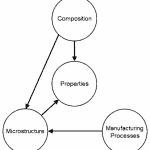
“A genuine leader is not a searcher for consensus but a molder of consensus.” – Martin Luther King
According to Merriam-Webster, a “decision” is “a choice that you make about something after thinking about it: the result of deciding.”
Your Reliability Engineering Professional Development Site
Find all articles across all article series listed in reverse chronological order.
by Carl S. Carlson Leave a Comment

“A genuine leader is not a searcher for consensus but a molder of consensus.” – Martin Luther King
According to Merriam-Webster, a “decision” is “a choice that you make about something after thinking about it: the result of deciding.”
“Destiny is no matter of chance. It is a matter of choice. It is not a thing to be waited for, it is a thing to be achieved.” – William Jennings Bryan
The Oxford English dictionary defines “reliability” as “the quality of being able to be trusted to do what somebody wants or needs.”
The textbook definition for “reliability” is “the probability that an item will perform its intended function for a designated period of time without failure under specified operating and environmental conditions.” [Read more…]
by Greg Hutchins Leave a Comment

Most of the risk assessment models I’ve discussed before use a basic formula to calculate a value for risk. By adding or multiplying values for the individual factors, you’ll get a numeric value for the risk itself. That’s going to allow you to put things into order, apply a color-code or description. That gives you enough differentiation to start a risk-based discussion or determine where you need to focus your attention and resources.
[Read more…]by Mike Sondalini Leave a Comment

Written by Mike Sondalini as a memo to his younger self, the content has been adapted into an article format. Given the depth of detailed information contained, this article is better considered a technical document. It summarizes Mike’s key learnings from decades of research, consulting, and training in the Plant Wellness Way EAM methodology.
[Read more…]by James Reyes-Picknell Leave a Comment

Are you ready to ramp back up?
Slowing down reduced supply and raised prices. Survival cost-cutting also put our companies into a state of Covid-induced paralysis. Like a person who is paralyzed – vital systems keep working so we survive, but growth, movement, and improvement all stop. I recall a soccer accident where my knee was damaged. I wasn’t paralyzed but that one leg was immobilized. It took me months to recover after the surgery was completed. The muscles in my leg had shrunk and strength needed to be rebuilt. In normal times, I’d have kept using the muscles and they would have strengthened, not shrunk.
by Michael Pfeifer, Ph.D., P.E. Leave a Comment

In the previous articles I discussed the component design process, the considerations for designing components, and the importance of leveraging materials engineering to design components that meet performance and reliability requirements at low cost.
I will start focusing on reliability, discussing the considerations for identifying component and joint reliability requirements. I will refer only to components for ease of writing and reading, but the discussion also applies to metallurgical joints, i.e. weld, braze, and solder joints.
In this article, I will discuss identification of the conditions that can cause degradation of the materials that comprise components and joints. [Read more…]

I love yogurt and eat it every day 🥄. My favorite is Oikos Lemon Meringue 🍋. I buy it every week.
But one day, I was unpacking my grocery bags and found that I had bought banana flavored (yuck! 🥺) instead of Lemon Meringue.
[Read more…]by Joe Anderson Leave a Comment

Step 1: Know your role and your responsibilities
The first step in creating more self-accountability is to start by making an assessment of what your role is and what those specific responsibilities are.
If you’re a father, your role and responsibilities are very different than if you’re the head of an emergency room, or if you’re coach of a basketball team. Every area of your life can have different roles, but the responsibilities of being a father, for example, can impact the responsibilities of being an entrepreneur. You will need to think about how late nights in the office can affect missing Timmy’s baseball game into your plan.
[Read more…]by Ray Harkins Leave a Comment

No discussion about managerial skills would be complete without talking about time management. Effective managers are excellent at utilizing their time. More than just their time, successful managers proficiently steward the range resources under their control … the people, the equipment, and the finances. But time is the most valuable of them all.
[Read more…]
Reliability-based forecasts can be made from field data on complaints, failures, repairs, age-replacements (life limits), NTFs (no trouble found), WEAP (warranty expiration anticipation phenomenon), spares, warranty claims, or deaths. Some spares inventory forecasting software says… “Please enter forecast______” No kidding. 1800 years ago Roman Jurist Ulpian made actuarial pension cost forecasts for retiring Roman Legionnaires. Would you like actuarial forecasts? Their distributions? Stock recommendations?
[Read more…]
Citizens often oppose chemical process facilities near their community because of potential for high consequence events. This risk aversion of society is commonly referred to as NIMBY (Not-in-my-backyard). The risk aversion is based not by taking into account annual fatalities but based on potential worst-case catastrophe. Thus the main factor influencing risk perception is catastrophic consequence potential.
[Read more…]by Robert (Bob) J. Latino Leave a Comment

Much has been written about James Reason’s original Swiss Cheese Model described in his book Managing the Risks of Organizational Accidents. Figure 1 is a basic representation of this model. Many today consider this model to be obsolete because of the evolving complexity of systems due to emerging technologies. Therefore, the linearity of failure expressed in this original model, is not as applicable as it was when introduced.
[Read more…]by Doug Plucknette Leave a Comment

Keeping it honest, layoffs suck.
They suck for the targeted employees and they suck for their immediate supervision and management.
In 1981 I was hired by our area’s largest employer at the time as an incoming apprentice. The day I was hired my soon to be wife and I celebrated she as a schoolteacher and I now had lifelong employment. We could now get married, buy a home, and start a family. In three years it took for me to complete my apprenticeship and for her to complete her master’s in education, we did just that. Life for this young family couldn’t have been better.
And then the layoffs started.

Things get a little dirty when humans get involved. In any system, human behavior and human understanding “gum up” the process. These are a few of the dirty secrets for effective communications.
Communication is the exchange of information from one person to another.
Communication requires a sender, a receiver, and a message. Technical professionals (sender) usually believe the decision maker (receiver) cannot understand the message because the decision maker is not as smart as they are. Most of the time, the lack of understanding comes from the noise generated by the sender. The burden of effective communication is on the send (technical professional), not the receiver (decision maker). [Read more…]

My contention is management many times compromises quality to mitigate budget and cost issues resulting in a major risk to the project.
How to minimize the quality risk on a project is addressed in this paper. The approach to do this is based on my 30 years of project and project risk management experience and knowledge. Let’s start with a story to illustrate my contention.
[Read more…]